
Emerita Intersects 11.4m of Massive Sulfide Grading 4.3% Copper, 48.31 g/t Silver and 1.85 g/t Gold at El Cura, Extending the Deposit at Depth

Emerita Resources Corp. (TSX-V: EMO) (OTCQB: EMOTF) (FSE: LLJA) has intersected significant mineralization in an ongoing drilling campaign at El Cura, part of Emerita’s wholly owned Iberian Belt West project (Figure 1). IBW hosts three previously identified Volcanogenic Massive Sulfide (VMS) deposits: La Romanera, El Cura and La Infanta. Results contained in this news release are from El Cura deposit area only.
- Drillhole EC014 intersected 11.4 m grading 4.3% copper, 48.31 g/t silver and 1.85 g/t gold. Hole EC014 is the deepest and thickest intercept to date in El Cura, extending the deposit 40m down-dip. This is the deepest and most westerly hole drilled to date on the El Cura deposit and is approximately 600 meters west of the historical workings.
- Drillhole EC015 intersected 4.6m grading 0.6% copper, 1.2% lead, 2.3% zinc, 33.02 g/t silver and 0.65 g/t gold, including 1.5m grading 0.9% copper, 3.3% lead, 6.4% zinc, 1.52 g/t gold and 67.00 g/t silver. Hole EC015 is located approximately 200 meters east and at shallower depth than EC014.
- Mineralization at El Cura occurs as bedded copper-zinc-lead-rich semi-massive to massive sulfides with local overprinting of copper-rich veining that can significantly enrich grades, as is evident in the drill holes on section 9685E.
- First-pass drilling at Western Nuevo Tintillo has been completed; 8 diamond drill holes totaling 4,318m across nearly 4km of strike. Geological interpretation and integration with the other regional data is underway by the Company to determine next steps for this property.
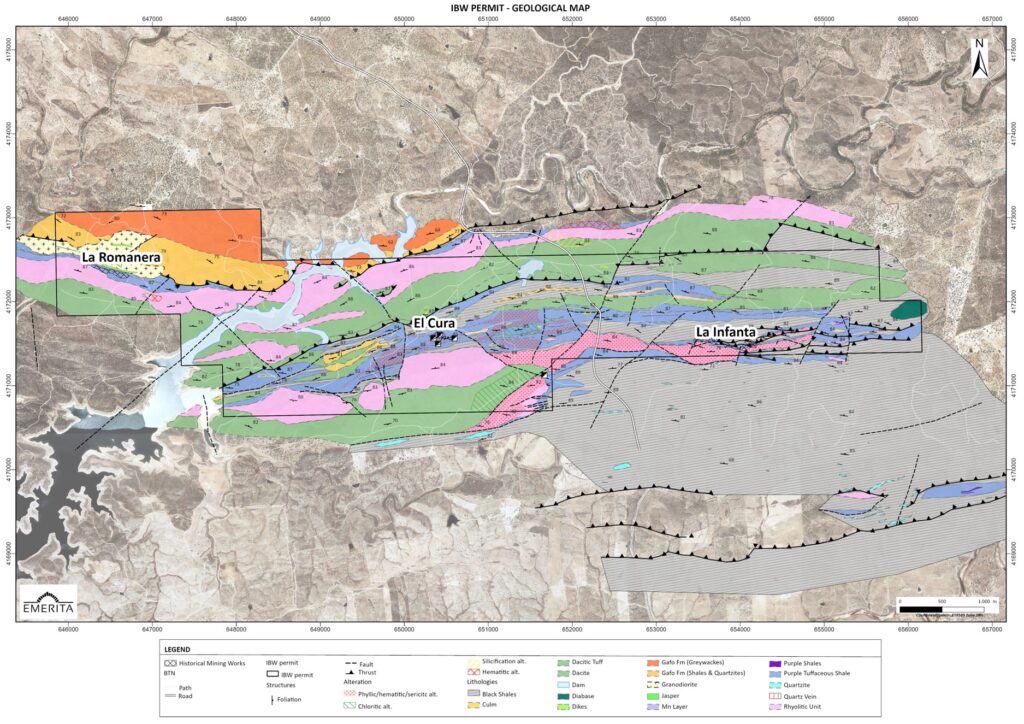
Figure 1. IBW tenement and locations of La Romanera, El Cura and La Infanta deposits.
Emerita Work at El Cura
Drilling at El Cura continues with two rigs testing depth and strike extensions along the WSW-ENE mineralized trend. Each rig is currently engaged in detailed sectional drilling of cross-sections 9685E and 9835E. Although the full extent of the deposit has not yet been determined, particularly to the west and at depth, a general zonation is evident, richer in gold and copper to the west and enriched in zinc and lead to the east. Drilling is currently cutting mineralization deeper and further to the west than previously known and more than 600m west of the historic mine workings (Figure 2).
Intercept spacing in sectional drilling is designed to intersect the mineralization at Indicated and Inferred Mineral Resource spacing, roughly 50m – 90m spacings. Assay results are shown in Table 1.
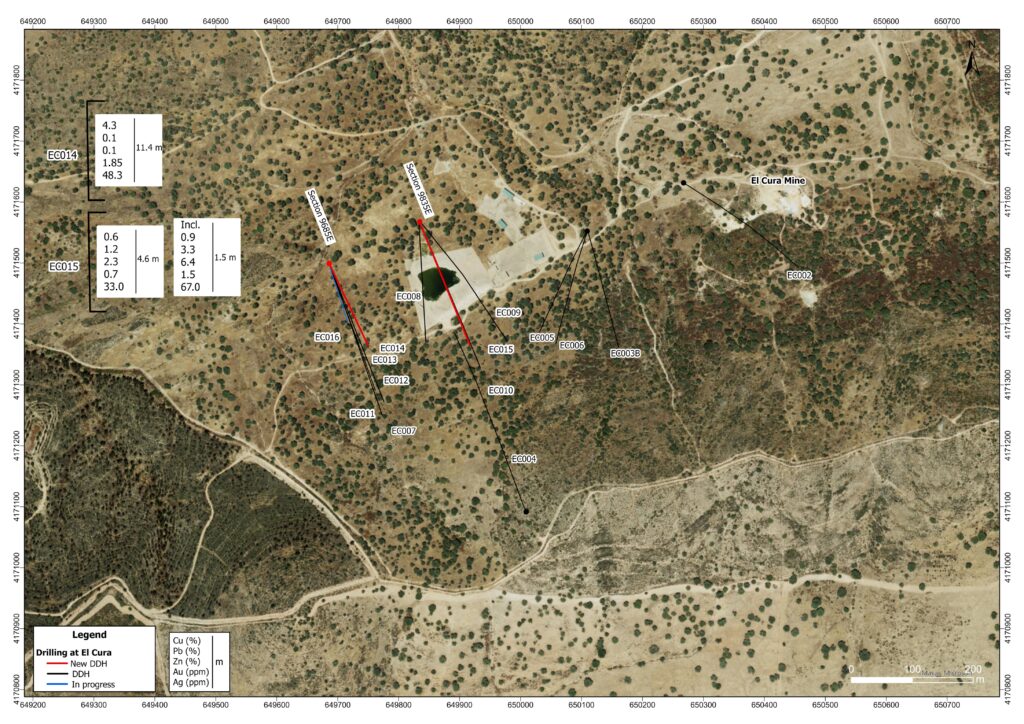
Figure 2. Plan view map showing drill hole traces of the El Cura drilling. Hole traces in this NR colored red.
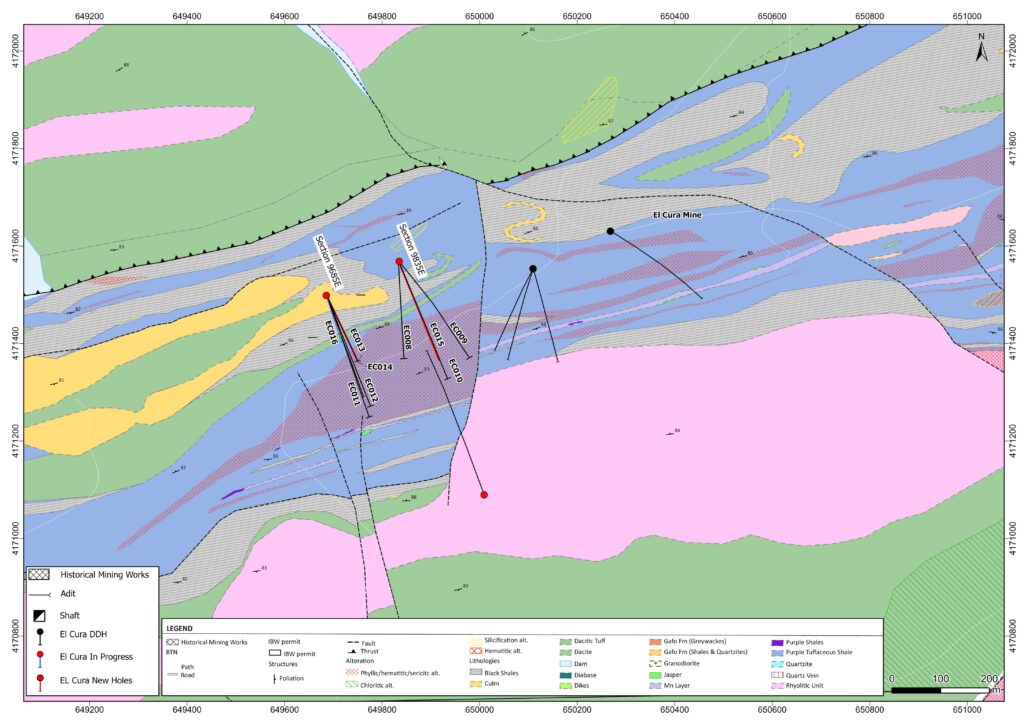
Figure 3. Geology map of El Cura area showing drill hole locations and location of historical mine workings. Mineralization is hosted in sediments and volcaniclastics colored blue and purple.
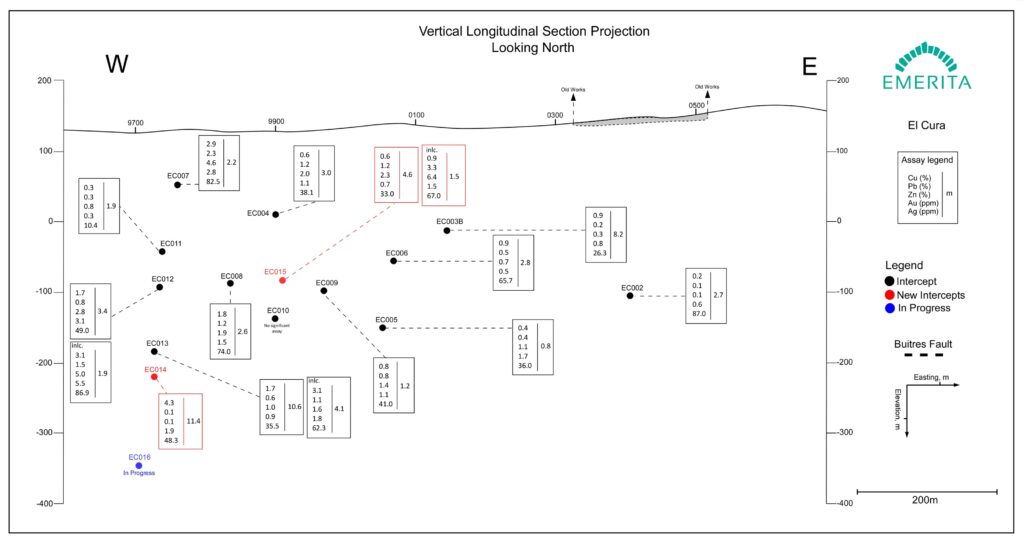
Figure 4. Drill hole pierce points projected to a vertical plane, oriented East-West, looking north. Holes EC014 and EC015 shown in red.
Table 1: Significant intercepts from recent drilling at El Cura.
| DDH | Easting | Northing | Elevation | Azimuth | Dip | Depth (m) | FROM | TO | Width (m) | Cu % | Pb % | Zn % | Au g/t | Ag g/t |
| EC014 | 649685 | 4171500 | 127 | 159 | -75 | 455.4 | 359.0 | 370.4 | 11.4 | 4.3 | 0.1 | 0.1 | 1.85 | 48.31 |
| EC015 | 649834.0 | 4171569.0 | 126.0 | 159 | -45 | 330.5 | 294.7 | 299.3 | 4.6 | 0.6 | 1.2 | 2.3 | 0.65 | 33.02 |
| incl. | 296.7 | 298.2 | 1.5 | 0.9 | 3.3 | 6.4 | 1.52 | 67.00 | ||||||
Discussion
Drilling thus far has defined a massive sulfide body plunging from near-surface in the vicinity of the historic mine workings downward to the west-southwest. Copper and gold grades are highest in the western extents of the currently defined mineralization, whereas zinc and lead are dominant in the east. As the deposit remains open at depth and along strike, metal zonation interpretation is preliminary.
The more western of the two holes, EC014 (CS 9685E), intersected high grade copper and gold massive sulfide (11.4m grading 4.3% Cu, 1.85 g/t Au, 48.31 g/t Ag, including 6m grading 5.7% Cu, 1.97 g/t Au and 62.17 g/t Ag) overprinted by chalcopyrite-quartz veining that upgrades the copper content. Examples of the mineralization style of EC014 are shown in Figure 5 below.


Figure 5. Core photos of EC014 copper-rich massive sulfide with abundant overprinting chalcopyrite-quartz veins.
EC015 (CS 9835E) intersected moderate grade lead and zinc mineralization (4.6m grading 0.6% Cu, 1.2% Pb, 2.3% Zn, 0.65 g/t Au and 33.02 g/t Ag, including 1.5m grading 0.9% Cu, 3.3% Pb, 6.4% Zn, 1.52 g/t Au, 67.00 g/t Ag). As in hole EC014, the higher copper grades in EC015 coincide with zones of cross-cutting chalcopyrite-quartz veining that approach 1% copper, but zinc and lead grades are more robust in EC015. Of note, the intercept depth in EC015 is 140m shallower than that of EC014 so it is too soon to tell if grades and widths will increase with depth in section 9835E as previously reported in section 9685E. Mineralization style of EC015 is shown in Figure 6 below.

Figure 6. Core photo of EC015 zinc-lead-dominant massive sulfide with cross-cutting high-grade chalcopyrite-quartz veins.
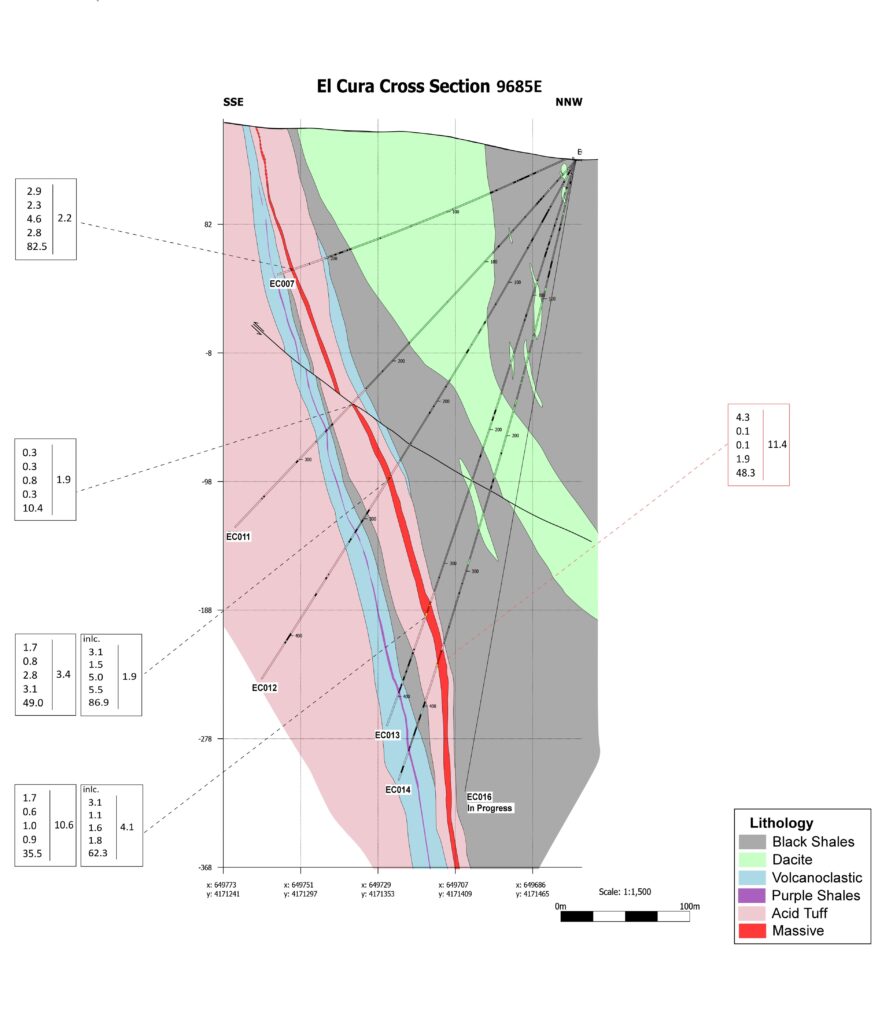
Figure 7. Interpretive geological cross section 9685E.
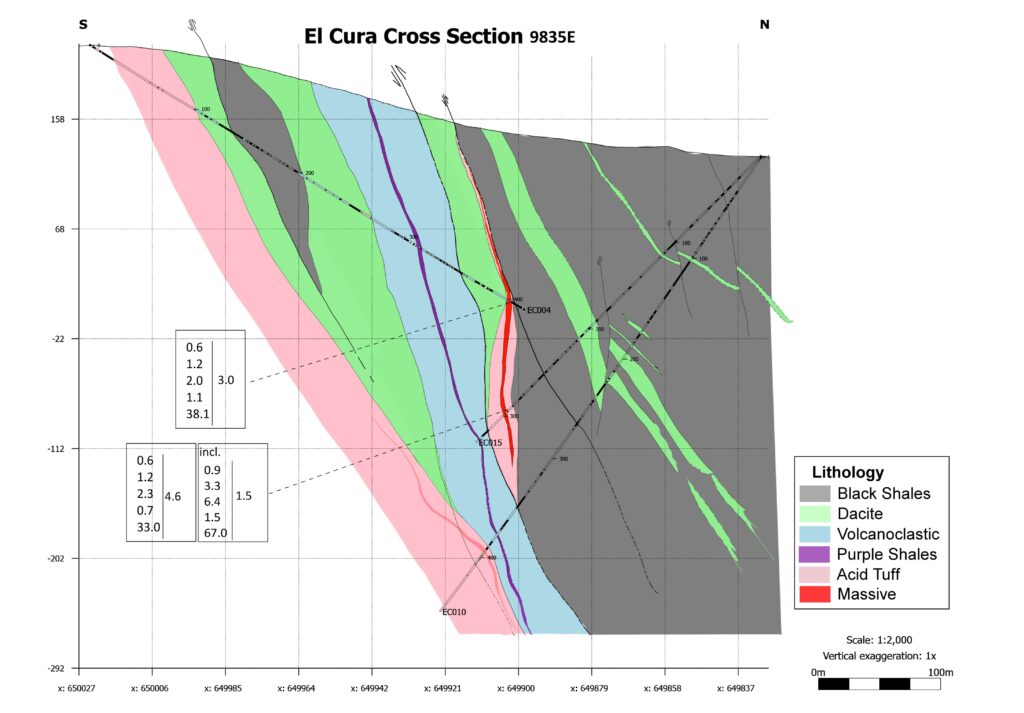
Figure 8. Interpretive geological cross section 9835E.
Next steps
Drilling will continue at El Cura with two rigs as the Company seeks to define the limits of mineralization at El Cura and deliver a preliminary mineral resource estimate. Outside work hours are presently reduced by four hours during the hot Andalucian summer but normal operating hours are expected as the temperature cools in September.
Concurrent with drilling, downhole geophysical surveys are being conducted to check for continuation of the massive sulfides down-dip and along strike.
Nuevo Tintillo
A single rig, 5,000m diamond drill program was initiated in late November 2023 and finished in the end of June 2024. In total, 4,318m of drilling was completed in 8 holes, testing coincident gravity and EM anomalies as well as surface showings of mineralization and favorable lithologies. The contact between felsic volcanics and overlying shales and volcaniclastics that hosts most of the orebodies of the area was clearly shown in geophysical tests and confirmed in drilling. Two types of mineralization were encountered: disseminated zinc-lead (NTW001, 2.2m @ 0.36% Pb and 0.72% Zn, including 0.5m @ 1.09% Pb and 2.00% Zn); and stockwork copper-enriched (NTW007, 1.1m @ 0.4% Cu; 3.0m @ 0.2% Cu). Sectional interpretation is underway that will combine with geophysical re-modeling, making use of in-situ, down-hole data gained from the program.
Quality Assurance/Quality Control
Drilling at El Cura is HQ size and core is placed into core trays at the drill site and transported directly from the site to Emerita’s coreshack from El Cura. Once the cores are received at Emerita’s coreshack they are photographed and geotechnical logging is performed. Geological, mineralogical and structural logging follows and mineralized zones are identified. The samples are marked every 1m or less, and respecting lithological contacts, with most of the samples 1.0m long. The zone immediately above and below the mineralized zones are also sampled. Core samples are sawed in half and half of the core is returned to the core tray for future reference. Once the core samples are cut, bagged and tagged, they are shipped to the ALS laboratory in Seville by Emerita personnel where sample preparation is done. In Seville, ALS performs the mechanical preparation of the samples and then the pulps are sent to ALS Ireland (ICP) and ALS Romania (fire assay). The analysis at ALS Lab corresponds to the ME-ICPore (19 elements) package, together with the Au-AA23 fire assay (Gold).
10% of the analyzed samples correspond to control samples (fine blanks, coarse blanks, high, medium and low grade standards). In addition, 10% of pulps are reanalyzed at a second independent certified laboratory (AGQ Lab Sevilla). When the analysis is completed, the certificates are received from the laboratory and the QA/QC protocol identifies any deviation or anomaly in the results and the entire batch is reassayed in such case. Once the data is approved by the QA/QC protocol assays are entered digitally directly into the database.
Qualified Person
Scientific and technical information in this news release has been reviewed and approved by Mr. Joaquin Merino, P.Geo., President of the Company and a Qualified Person as defined by NI 43-101.
About Emerita Resources Corp.
Emerita is a natural resource company engaged in the acquisition, exploration, and development of mineral properties in Europe, with a primary focus on exploring in Spain. The Company’s corporate office and technical team are based in Sevilla, Spain with an administrative office in Toronto, Canada.
MORE or "UNCATEGORIZED"
Kuya Silver Confirms High-Grade Silver-Gold Vein Mineralization at Umm-Hadid with Initial Drill Results up to 1483.9 g/t AgEq over 2 Metres
Kuya Silver Corporation (CSE: KUYA) (OTCQB: KUYAF) (FSE: 6MR1) is... READ MORE
First Phosphate Closes Final Tranche of Oversubscribed Private Placement
First Phosphate Corp. (CSE: PHOS) (OTCQX: FRSPF) (FSE: KD0) is... READ MORE
GFG Receives Final Payment from the Sale of its Rattlesnake Hills Gold Project
GFG Resources Inc. (TSX-V: GFG) (OTCQB: GFGSF) announces that i... READ MORE
Goliath Receives $1,730,882 Through Warrant Exercises, Inclusive Of Crescat Capital A Longtime Strategic And Cornerstone Shareholder
Goliath Resources Limited (TSX-V: GOT) (OTCQB: GOTRF) (FSE: B4IF)... READ MORE
Robex Pours First Gold at Kiniéro on Schedule and Budget
Highlights: Gold bar weighing 2.64 kilograms (85 oz) poured in th... READ MORE












